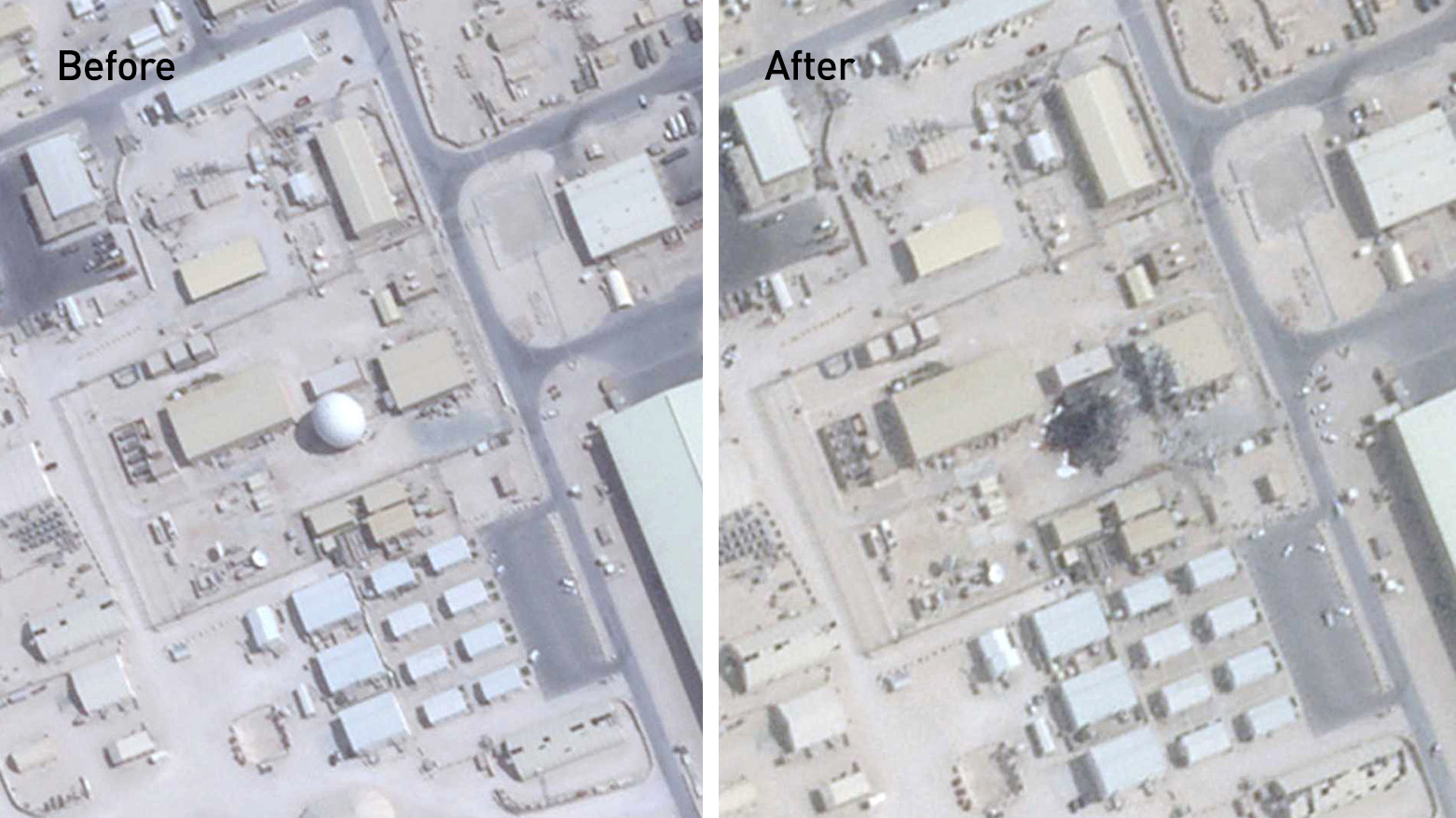Iran’s Missile Strike on U.S. Base in Qatar Damaged Strategic Communications Facility: Satellite Images Confirm
Iran's missile strike damaged a US communications dome at Qatar's Al Udeid Air Base in June 2025. While Tehran claimed victory, Washington downplayed impacts, calling it a "weak response" with no casualties amid conflicting damage reports.

By Ahora Qadi
ERBIL (Kurdistan24) – A ballistic missile launched by Iran on Jun. 23, 2025, struck a geodesic dome at Al Udeid Air Base in Qatar, damaging a sensitive U.S. military communications facility, according to satellite imagery analyzed by the Associated Press and later confirmed by the Pentagon.
The attack targeted a key site used by the U.S. for secure communications. The dome, known as a radome, housed a satellite dish and was part of the $15 million modernized enterprise terminal installed by the U.S. Air Force’s 379th Air Expeditionary Wing in 2016. The base serves as the forward headquarters of U.S. Central Command and is one of Washington’s most strategically important military installations in the Middle East.
Satellite Imagery Reveals Extent of Damage
Planet Labs satellite images taken the morning of June 23 show the radome intact at Al Udeid Air Base, located just outside Doha. However, images from June 25 and thereafter show the dome missing and burn marks visible at the strike site. Minor damage is also seen on an adjacent building, though the rest of the base appears largely untouched.
The strike caused a brief disruption in regional air travel but did not escalate into broader hostilities. Pentagon spokesperson Sean Parnell stated, “The missile strike did minimal damage to equipment and structures on the base. Al Udeid Air Base remains fully operational and capable of conducting its mission, alongside our Qatari partners, to provide security and stability in the region.”
Qatari authorities have not publicly commented on the attack or the extent of the damage.
Iran’s Calculated Retaliation
The missile strike came in direct response to U.S. airstrikes on three Iranian nuclear facilities earlier in June and served as a calculated escalation that ultimately led to a U.S.-brokered ceasefire, ending the 12-day Iran-Israel war.
Former U.S. President Donald Trump, who visited Al Udeid on May 15 during his Middle East tour, said that Iran had signaled in advance the timing and scope of its retaliation, allowing for the evacuation of American aircraft and preparedness by U.S. and Qatari air defense systems.
Speaking on Truth Social, Trump downplayed the incident as a “very weak response,” claiming that 13 of 14 missiles were intercepted and one was “set free” in a non-threatening direction. “I want to thank Iran for giving us early notice, which made it possible for no lives to be lost, and nobody to be injured,” he wrote.
Conflicting Narratives from Tehran
While U.S. officials minimized the impact, Iran’s paramilitary Revolutionary Guard declared the attack a significant success. The Supreme National Security Council claimed the base had been “smashed,” without presenting specific evidence. The London-based Iran International was among the first outlets to publish satellite imagery confirming the dome’s destruction.
Hardline cleric Ahmad Alamolhoda, an adviser to Supreme Leader Ayatollah Ali Khamenei, went further, alleging that the strike had severed U.S. military communications. “All equipment of the base was completely destroyed and now the U.S. command stream and connection from Al Udeid base to its other military bases have been completely cut,” he claimed.